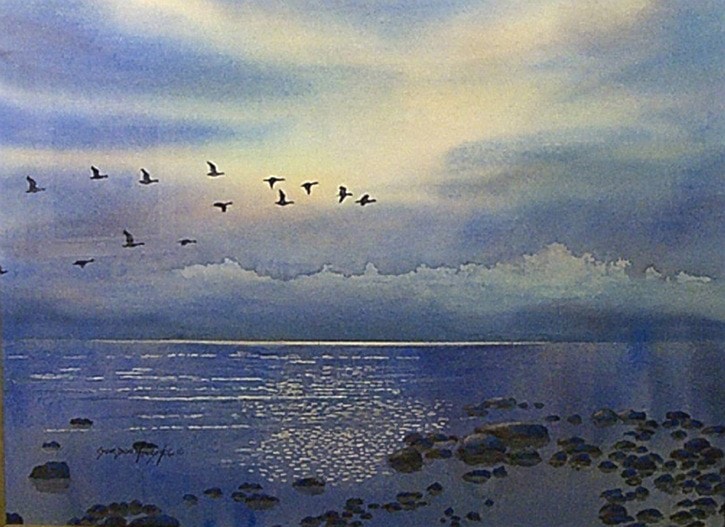My wife’s hearing is better than mine, so every October she alerts me to “The Wild Goose call” with a “Did you hear that?” I’m not sure that my usual response of “Hear what?” is one resulting from poor hearing or a reluctance to admit that summer is over. Over or not, the sound of Canada Geese overhead is always thrilling.
This October, Ann and I went to Manitoba to see fall colours and friends and relatives; both a blessing to warm the heart. We had a great time visualizing and socializing but one of the special things we did was travel north of Winnipeg to Oak Hammock Marsh, one of North America’s birding hotspots.
This 36-square-kilometre Wildlife Management Area features a restored prairie marsh, waterfowl lure crops, artesian springs, some of Manitoba’s last remaining patches of tall-grass prairie and 30 kilometres of trails to explore. This time of year there can be as many as 200,000 waterfowl migrating through here every day; there were geese everywhere!
The Giant Canada Goose, which migrates through here, can weigh up to 20 pounds and live up to 30 years. There are also over two million Snow Geese that make their way through here each fall to winter in the Gulf of Mexico.
The West Coast of B.C., however, is a very special place for geese and other waterfowl. With our warmer climate, many of them winter here! So when you hear their call, they may be giving signals to their buddies saying, “Hey, this is a great place to set up our winter camp”!
While many of our “Snow Bird” buddies are south bound, Ann and I are convinced that “this is a great place to set up our winter camp”.
Gordon Henschel owns an art gallery in Nimpkish Heights. www.henschel.ca.
